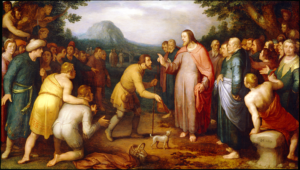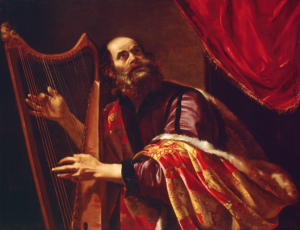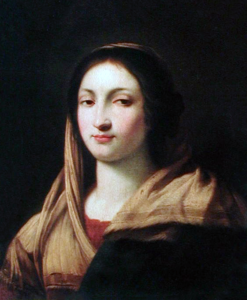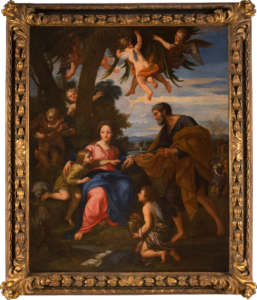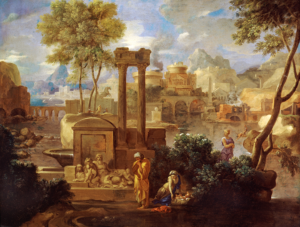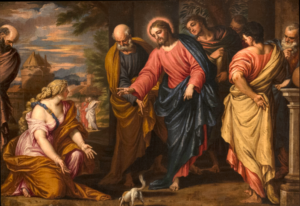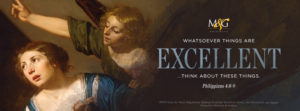St. Matthew with the Angel
Oil on canvas
Salomon Koninck
Dutch, 1609-1656
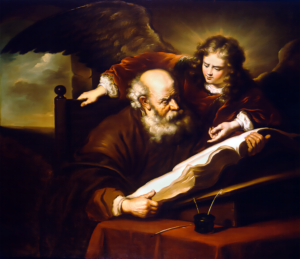
Salomon Koninck was a Dutch Baroque painter and engraver. Throughout his career, he was heavily influenced by the innovative Dutch master Rembrandt van Rijn and adopted the great artist’s theatrical lighting and composition. It is only fitting then that Koninck’s St. Matthew with the Angel has been displayed in M&G’s Rembrandt Hall, featuring works by Rembrandt and many of his students. While not a household name like Rembrandt, Koninck and his work provide a wonderful reminder of the spectacular.
St. Matthew with the Angel is not an unusual subject for Koninck as many of his paintings focused on philosophers and scholars. One example is The Hermit, which bears similar resemblance to his Matthew. Both include an elderly man poring over a book, but the distinction between the two is the presence of the youthful angel at Matthew’s side. Throughout art history, Matthew has been paired with many objects, including a halberd or sword, but his most common attributes are a book and an angel. In M&G’s painting, the angel leans next to him as if offering words of inspiration for his empty manuscript. By placing the two so close together, Koninck creates an intimate conversation that draws the viewer into the scene and the mystery of the apostle’s text.
While the other gospel writers certainly had divine support when they penned their descriptive records of Christ’s life, Matthew is the only one consistently shown in art with a winged man or angel. This pairing has been a tradition since the early depictions of Matthew, and many art historians credit the second-century bishop St. Irenaeus as one of the first to ascribe the imagery. In his Against Heresies, Irenaeus argued that all four gospels were necessary to understand a complete picture of Jesus Christ. He referenced Revelation 4:6-7, which talks of “four living creatures” surrounding the throne of God. These winged beings appeared to be like a lion, ox, eagle, and the fourth had a face of a man. Irenaeus assigned each evangelist one of the four creatures, and he chose the latter to represent the gospel of Matthew because the disciple and former tax collector focused on Jesus’ human lineage. While some of the gospel writers’ attributes changed from Irenaeus’ original designation, Matthew maintained the angel or winged man.
Another figure in church history, Rabanus Maurus, helped solidify the visual pairing of Matthew with an angel. In the ninth century, Maurus wrote a commentary on the Old Testament book of Ezekiel, which discusses the four faces of the creatures described in Ezekiel 1:10. Like Irenaeus, he claimed Matthew’s symbol is the man because of the inclusion of Jesus Christ’s earthly genealogy. However, Maurus further distinguished each gospel writer’s iconography, explaining that each symbol represents a mystery surrounding the life of Christ. And for Matthew, the symbol of man recalls the miraculous Incarnation. With such extensive research and support, it is no wonder that Matthew was paired with an angel. For nearly two thousand years, artists in the Western world have carried on this traditional iconography for the apostle.
As shown, Koninck’s St. Matthew with the Angel is not unusual in its symbolism and its subject matter, nor groundbreaking in in its use of artistic technique. However, Koninck does emphasize a closeness in the relationship between the earthly and the spiritual. Through divine direction and inspiration, the gospels were written by feeble men. It is through that spiritual intervention that we are able to read the gospels and remind ourselves of the wonders of God. Art is simply one reminder that when God uses frail, earthly things, He creates something spectacular.
KC Christmas Beach, M&G volunteer and former graduate assistant
Published 2022
